Nothing makes a burger better than a soft, fresh bun that does not fall apart or taste bland. Store-bought buns get the job done, but once you try homemade, you will never want to go back. These burger buns come out soft, light, and just the right amount of chewy. They hold up to any patty, soak up the juices, and still stay together.
Making your own buns is easier than you might think. You get full control over what goes in, and you end up with something that tastes way better than anything off a shelf. The difference shows in every bite.

Fluffy Homemade Burger Buns
Ingredients
Equipment
Method
- Activate the YeastIn a large mixing bowl, whisk together warm milk, sugar, and yeast. Let sit for 5–10 minutes until foamy.
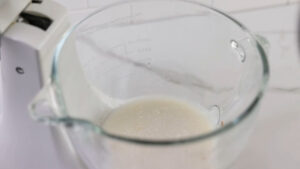
- Mix the DoughAdd the egg, flour, salt, and softened butter. Mix until a shaggy dough forms.
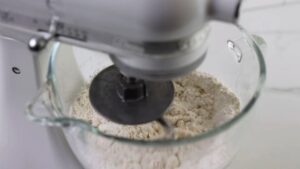
- Knead the DoughKnead in a stand mixer with the dough hook for 6–8 minutes (or by hand for 10 minutes) until the dough is smooth and slightly tacky.
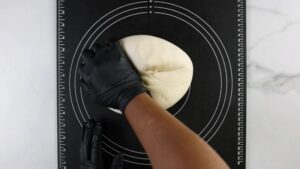
- First RiseShape into a ball and place in a greased bowl. Cover and let rise in a warm spot for 1–1.5 hours, or until doubled in size.
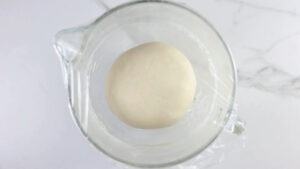
- Shape the BunsPunch down the dough, then divide into 8 equal pieces. Shape each into a smooth ball and place on a parchment-lined baking sheet, spaced evenly.
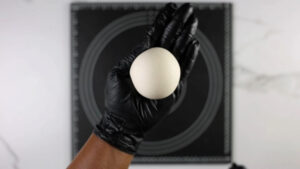
- Second RiseCover loosely and let rise again for 30–45 minutes, until puffy.
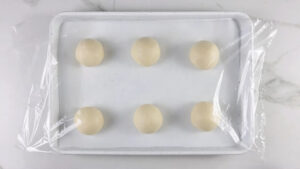
- Preheat OvenPreheat oven to 375°F (190°C).

- Optional Egg WashBeat together 1 egg yolk and 1 tbsp milk. Brush tops of buns gently and sprinkle with sesame seeds if desired.
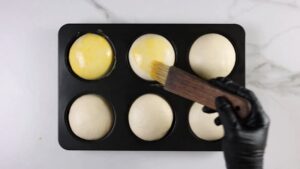
- BakeBake for 15–17 minutes or until golden brown on top.
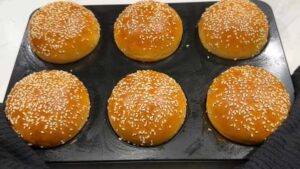
- CoolLet buns cool completely on a wire rack before slicing and serving.
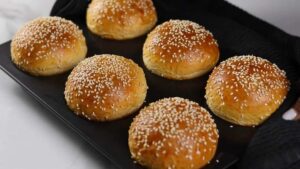
Video
Notes
- Flour Matters: For even softer buns, substitute ½ cup of all-purpose flour with bread flour.
- Make Ahead: Buns can be frozen once baked and cooled—just thaw and reheat when needed.
- Milk Temperature: Make sure the milk isn’t too hot or it can kill the yeast. Aim for 105–110°F.
- Flavor Boost: Add a pinch of garlic powder or onion powder to the dough for extra depth.
Additional Tips
1. Add Tangzhong for Extra Soft and Moist Buns
Mix 3 tablespoons water with 2 tablespoons flour, cook until thick, then cool. Add to the dough for a softer texture and longer freshness without changing the flavor.
2. Shape Dough with the Tuck and Pull Method
Tuck the edges of each dough piece under and pull the top tight against your counter. This creates a smooth, round top and helps the buns rise evenly without collapsing.
3. Use Steam in the Oven for a Glossy Finish
Place a small dish of hot water on the lower rack while baking. The added steam gives each bun a golden, shiny crust and helps with even baking.
4. Swap in Ghee or Duck Fat for Richer Flavor
Use melted ghee or duck fat instead of butter. Ghee adds a subtle nutty taste. Duck fat brings more depth and richness to each bun.
5. Make Slider Buns Instead of Full-Size
Divide the dough into 12 to 14 pieces for smaller buns. Bake for 10 to 12 minutes. Great for sliders, party trays, or kid-sized burgers.
Frequently Asked Questions
What are the caloric and macronutrient contents of a homemade burger bun?
A single homemade burger bun typically contains approximately 200 to 250 calories. The macronutrients are generally around 8-10 grams of protein, 2-5 grams of fat, and 40-50 grams of carbohydrates, depending on the specific recipe used.
How can I create a healthier burger bun through my recipe choices?
To make a healthier bun, one may opt for whole grain flour instead of white flour, which increases the fiber content. Additionally, using natural sweeteners like honey and fats such as olive oil or avocados can improve the nutritional profile.
Can you provide a breakdown of the fiber and sugar content in a single homemade burger bun?
The fiber content in a homemade bun is typically between 2 to 4 grams, depending on the type of flour used. A bun made with refined white flour has less fiber than one made with whole wheat. Sugar content can range from a minimal amount in a plain bun to several grams if sweeteners are added.
Which ingredients can I substitute for a more nutritional homemade bun without compromising texture?
To increase the nutritional value without sacrificing texture, substitute a portion of the white flour with whole-wheat flour. Ground flaxseed or wheat germ can also be added. In some recipes, applesauce or mashed bananas may replace part of the fat for a moister bun.
Conclusion
Making your own burger buns does more than upgrade a meal. It gives you better texture, better flavor, and full control over every ingredient. No additives, no shortcuts—just soft, fresh buns that hold up to any patty. And make sure to prepare a good BBQ sauce and secure the perfect experience.
Once you see how easy it is, you will not want store-bought again. You can adjust the size, swap in flavors, or freeze a batch for later. It is a small step that makes a big difference on the plate.
Hi there, my name is Kelly Barlow and kellytoeat.com is my blog. Here, I write about various recipes I want to reccommend to readers.
I try to find the best possible recipes that can attract the attention of readers, and at the same time, I strive to write it in the most engaging manner possible.
When I was younger, I wanted to become a chef. Sadly, it wasn’t meant to be, but at the very least, I write about it.
